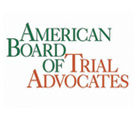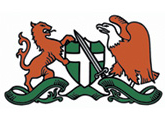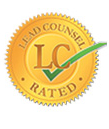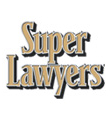Sustaining severe injuries in a car accident can make your life have a drastic turn for the worst. For instance, you won’t be capable of going to work, and you may be incapable of paying your medical expenses as well. Additionally, your car may have sustained significant damage that needs repair, which you may not be able to afford because you are financially incapable. In a situation like this, it is only expected that you will become devastated and worried, wondering what to do next and where to start.
Well, you can start by contacting a skilled car accident personal injury lawyer, who will help you figure out your situation. Your attorney will help you file a personal injury claim, so the person that caused the accident can compensate you for all the pain and loss they caused you. If you are in Los Angeles, reach out to the Los Angeles Car Accident Attorney law firm. We are committed to ensuring you receive the maximum possible compensation that will help return your life to where it was before the accident. Call us as soon as possible for you to increase the chances of winning your lawsuit. In this article, we look at how you can get compensation after a T-bone car accident.
What Is a T-Bone Accident?
A T-bone accident is also referred to as a side-impact collision or a broadside crash. It occurs when one motor-vehicle crashes head-on into the side of another. The collision leads to the two autos forming a right angle or the letter ‘T,’ hence the name. A T-bone car collision usually takes place when a motorist loses control of their vehicle or at intersections.
These kinds of accidents continue to increase in Los Angeles because of the increasing number of Sport Utility Vehicles (SUVs) on the road. The severity of the impact on the hit vehicle depends on the speed of the hitting vehicle, weight, and size. It also depends on whether both cars had safety features. Side bags are one of the safety features that may shield occupants of a vehicle in case of an accident. However, the force of the crash may cause subsequent collisions since the T-boned car may roll, striking other vehicles, stationary objects, or pedestrians before it rests.
Possible Injuries in a Broadside Crash
The kinds of injuries you may sustain if involved in a broadside crash vary based on different factors. They include:
The side of the automobile the occupant is sitting
The occupants sitting on the side-impacted side commonly sustain injuries to the chest, followed by head, pelvis, and abdomen injuries, and injuries to the lower extremities. Those occupying the non-impacted side will commonly suffer injuries to the head, followed by chest injuries. Those sitting on the side-impacted side usually sustain severe injuries as the door panel strikes them. On the other hand, the occupants on the non-impacted side often sustain severe injuries by striking the passenger close to them and then the pillar by the front door, often with their heads.
Use of Restraints
Mostly, children get severely injured because they aren’t appropriately restrained. Most minors wear adult lap belts and neglect using the appropriate booster or child seats for their weight, height, and age. For adults in general, failing to use lap or shoulder belts elevates the risk of suffering severe injuries and sometimes death when involved in a side-impact collision.
The Victim’s Age
Usually, it is more likely that minors will sustain significant injuries than adults in case of a broadside accident. Children may also be severely hurt even when the accident is a low-speed impact one as compared to adults.
Other factors that determine the kind of injury you may sustain in a T-bone crash include the angle of the collision, the speed of the car that’s side-impacting the other, the type of vehicle, and airbags.
Particular safety features may significantly lower the risk of sustaining severe injuries in case of a broadside collision. Particularly, newer safety features, for instance, side-curtain airbags, have enabled vehicles to have high side-impact ratings. But even when these features are in place, a side-impact accident could result in severe injuries. These injuries may include:
-
Spinal cord injuries
-
Head injury
-
Back injury and neck injuries
-
Broken bones
-
Internal organ damage and internal bleeding
-
Facial trauma
-
Chest injuries
-
Severe bruising
-
Hip displacement
-
Concussions
-
Ear damage & hearing loss
-
Broken limbs and a fractured pelvis
-
Fractured or separated shoulders
-
Traumatic brain injury (TBI) and other injuries to the brain
These auto crash injuries in T-bone accidents may worsen if the occupants get trapped inside the vehicle. Broadside collisions usually make it impossible or difficult to open the car door after a crash. In this case, the injured driver or passengers won’t be capable of getting out so they can seek medical care. A situation like this may make the emergency responders use the hydraulic rescue tools to free those stuck in the vehicle. If the victims get trapped in the car for much time, the risk of more severe injuries increases, and sometimes death may even occur.
What to Do After Involvement in a T-Bone Collision
For your car accident personal injury claim to be successful, you should produce reliable proof against the defendant. Obtaining credible evidence depends on what you do after the accident. Therefore, before you leave the accident scene, you should first gather the necessary details that can support your lawsuit. The details include:
-
The location, time, and date of the crash, including the direction you were headed, lane you were driving in, and name of the street.
-
Insurance details of the other motorist
-
Contact info of the other involved driver
-
Contact details of any eyewitnesses to the collision
-
Photos of the accident scene as well as your physical injuries
-
Events that occurred before and after the accident
-
The traffic and weather conditions when the crash took place
Apart from gathering this information, you should also call law enforcement officers to the accident scene so they can investigate and write a report concerning the collision. Your lawyer can then request this report, which will help him/her in further investigations as well as provide more information about the crash.
Also, you shouldn’t be quick to admit fault. Avoid saying anything to the other driver that would suggest you were to blame for the accident. The other driver might pick up the statement and use it against you during fault determination. The only party you should discuss the accident with is your attorney. Avoid also speaking to the insurance company of the at-fault driver without your lawyer present. They may try to persuade you to settle for less than what your injury claim is worth.
Most importantly, you should seek immediate medical care, especially if you’re in pain. Even if you aren’t in pain or you didn’t sustain any physical injury, you should still go for a medical checkup since some injuries might be internal, whereas others might take time before the symptoms show. If you’re severely injured or a victim at the scene is, call 911 so that an ambulance can take you to the hospital.
Another reason you should seek medical care is that your lawyer will need the medical records to assess how severe your injuries are and to determine the settlement amount you should claim. Medical records also deny the at-fault party’s insurance company a chance to argue that your injuries did not arise from the crash.
Ensure you follow all the treatment recommendations and instructions your doctor will give. For instance, you should go for checkups on the specified dates without failure. Failure to which can significantly hurt your lawsuit. If the liable party's insurance provider accesses your medical records and finds out you did not follow your doctor’s instructions, they can use this information against you and argue that you were partly to blame for your situation.
Liability in T-Bone Accidents
Resulting injuries after a broadside accident may be more severe compared to a head-on accident or rear-end collision since a vehicle’s side has a narrow layer. When a T-bone collision occurs, it’s only this layer that acts as protection between the vehicle occupants and the outside. Another factor that could make injuries resulting from a T-bone accident severe is that vehicle occupants might get trapped inside the vehicle until the emergency responders can rescue them.
In T-bone accidents, the motorist at fault is responsible for the passengers’ or other drivers’ damages or injuries. Liability in a side-impact crash depends on which party was negligent as to cause the accident. Injured victims need to bring an injury suit or claim for them to recover damages for their injuries, losses, and property damage. A driver will be said to have been negligent if he/she failed to operate the vehicle with reasonable care or violated any of the traffic laws.
Fault in T-bone accidents depends on several factors, for instance, vehicle defects, poor road conditions, and unclear traffic signals. However, most T-bone related crashes occur due to drivers operating their vehicles without reasonable care for other road users. Common reasons why T-bone crashes occur include:
-
Distracted driving
-
Speeding
-
Texting while driving
-
Running a stop sign red light
-
Driving while intoxicated with alcohol or drugs
-
Failing to observe traffic signals
-
Failure to yield the right-way -to oncoming vehicles
-
Turning left when it’s not safe
According to California’s negligence law, the negligent motorist in an auto accident is responsible for any damages and injuries inflicted on another. For you to recover damages in an injury lawsuit or claim after a crash, you have to prove that the at-fault party was indeed negligent, thus, causing the collision. That is, you need to demonstrate that:
-
The motorist owed you a duty of care
-
He/she violated that duty by being negligent
-
His/her negligence substantially contributed to the accident
-
You suffered injuries, damages, or loss as a result of that crash
As we mentioned earlier, the failure of a driver to use due care while driving is negligence. Exercising one’s duty of care while driving requires:
-
Controlling the movement and speed of the motor vehicle
-
Using reasonable care while operating the car
-
Watching out for other cars, obstacles, and pedestrians
Other liable parties are:
Road Designers and Engineers
Certain intersections are overly dangerous compared to others. Researchers that analyze accident and traffic data can identify the intersections where collisions occur more often than they should. However, what’s even more difficult is establishing what makes certain intersections risky and who would have acted to avoid the dangers.
These are a few of the intersection features that road designers and engineers have control over, which can make an intersection vulnerable to broadside accidents:
-
Inappropriate signaling/signage- Any person designing a new roadway or upgrading an already existing intersection has to consider which intersection ought to be a four-way stop and which one should be two-way. They should also consider where to place traffic lights rather than a stop sign. Generally, the more traffic that’s expected to pass through a given intersection, the more robust the signals ought to be. At times, engineers merely make wrong decisions, such that motorists who approach the intersection don’t respond correctly to dangers from the crossing traffic.
-
Confusing layout- Motorists should be capable of figuring out where they are permitted to turn at or drive through an intersection without much of a hassle. Confusing traffic patterns could cause motorists to commit mistakes and drive through intersections when they shouldn’t have.
Car Parts Manufacturers
A T-bone accident may also happen due to mechanical failure. When this happens, the vehicle manufacturer or the manufacturer of the car components may be liable for the resulting injuries for making faulty parts.
What If You Were Partly To Blame For The T-Bone Collision?
In a crash where both motorists were partly at fault, or the motorists aren’t sure who caused the wreck, they both may still get compensation. As per the comparative fault laws of California, a driver who is partly responsible for the accident can still recover compensation if he/she sustained injuries or suffered losses. However, the damages will be reduced depending on the degree of fault of each party.
In certain cases, the hurt party could be considered to be negligent even if they didn’t cause the collision. For instance, it can be a favorable defense to the motorist that caused the crash that the other motorist wasn’t wearing a seatbelt.
The complainant may be considered to be negligent if they:
-
Had a functioning seatbelt but did not wear it
-
A sensibly careful individual in a similar situation would use the seatbelt
-
The injuries could have been less severe or prevented if they had worn the seatbelt
Determining fault and negligence in a broadside accident can get complicated, particularly when the two sides are telling different stories. Speak with a skilled personal injury attorney concerning your case to know if you may be negligent and may be blamed for the accident, and also to find out what kinds of damages you may recover after a collision.
Damages You Can Recover Upon Filing a T-Bone Accident Lawsuit
Damages refer to the losses that arise from a collision. In auto accidents, damages may include both injuries and property damage. If you sustain injuries as a result of a T-bone crash, you can sue for compensation by bringing a personal injury suit.
The damages you can recover after filing an injury suit include compensatory and punitive. Compensatory damages are further divided into two. That is the economic (special) and non-economic (general) damages. Special damages generally refer to the kinds of damages whose dollar value is easy to calculate. They compensate for the monetary losses you suffered due to an accident. They include:
-
Lost wages
-
Medical bills
-
Vehicle repairs
-
Loss of future earning capacity
-
Out-of-pocket expenses
-
Emergency medical treatment
-
Medication & medical supplies
-
Physical and rehabilitative therapy
-
Future treatment and care
General damages, on the other hand, are more difficult to evaluate and place a dollar value on them. They can’t be calculated by adding up receipts and documented bills. These damages compensate for non-monetary, not readily quantifiable losses, i.e., the suffering, trauma, distress, you experienced as a result of the accident. They include:
-
Pain & suffering
-
Loss of consortium (for a spouse or domestic partner)
-
Emotional distress
-
Mental anguish
-
Loss of enjoyment of life
-
Disability or disfigurement
Punitive Damages
Apart from special and general damages, we mentioned that you could also recover punitive damages, although they are rarely rewarded. Punitive damages are awarded to punish the defendant for their outrageous conduct and discourage the defendant and other people from engaging in similar behavior, and not for the plaintiff’s loss. For you to be awarded these damages, you have to show by the preponderance of the evidence that the defendant acted intentionally or maliciously. For instance, in this case, you can show that the defendant hit you intentionally.
Compensation for Wrongful Death
If a child or spouse dies in a broadside accident, it means the person won’t be present to bring an injury suit against the responsible party. However, the surviving family members of the deceased may be capable of filing the claim under California’s wrongful death law. This is the only means through which the family members can hold the at-fault person responsible for their negligent actions. The damages one can recover upon filing a wrongful death claim include:
-
Funeral expenses
-
Burial costs
-
Compensation for loss of support and companionship
-
Loss of financial earnings that the deceased would be earning had he/she survived
The deceased’s members of the family that are allowed to bring a wrongful death lawsuit generally include:
-
Domestic partner
-
Children of the deceased
-
Spouse
-
Grandchildren (in case the deceased’s children are also dead)
-
Any other person that’s entitled to the deceased’s property as per the intestate succession laws
What Happens If The Negligent Driver Was Uninsured?
California law obligates motorists to have a minimum amount of auto insurance coverage. Also, the law requires that insurance companies offer underinsured and uninsured coverage. However, underinsured and uninsured policies are optional.
Uninsured driver insurance pays for the damage cost when another motorist is to blame for the crash but doesn’t have insurance. On the other hand, underinsured driver insurance pays for the damage cost when the at-fault motorist’s insurance policy doesn’t provide sufficient coverage to compensate for the total damage the accident caused.
In case you get injured in a crash by a car driver that doesn’t have insurance or doesn’t have enough insurance) you may need to bring a compensation claim against the motorist personally. However, most drivers that have no insurance don’t have many assets or much money to pay the cost of medical expenses and other damages resulting from the accident.
The Statute of Limitations in T-Bone Accidents
The statute of limitations refers to the period a victim is allowed to file his/her personal injury claim. The timeframe for bringing a side-impact accident claim in the state of California is two years from the date of the accident. If the claim involves a government organization, then you have only six months to bring a claim. And if the victim succumbed to the injuries from the accident, the surviving family members of the deceased have also two years to file a wrongful death claim. Thus, you should ensure you contact a car accident personal injury lawyer before the timeframe expires.
How a Lawyer Can Help in a Side-Impact Personal Injury Case
If it’s a slight fender bender, you may not have to hire an auto accident attorney. But when you have high medical bills to pay, weeks or days of missing to go to work, possible permanent injuries, then there’s a lot at stake, and it needs an expert car accident personal injury attorney to help you out.
The car insurance company may deny your claim or offer to settle your case for less than your claim is worth. Additionally, the insurance provider may keep delaying your payment until you have no option but to agree to their offer. Keep in mind that insurance companies are a business and aren’t acting in your best interest.
Before agreeing to the offer that the insurance company is making to you and signing to settle your case, speak with a skilled personal injury attorney. Accident lawyers understand broadside accident injuries, causes, policy reports, and policy limits. They can negotiate with insurance adjusters to obtain their clients the maximum compensation possible with little stress.
Find a Car Accident Personal Injury Attorney Near Me
If you have been severely injured in a T-bone accident, the emotional pain usually combines with unexpected and substantial expenses as well as significant financial loss. When a loved one dies due to the crash, the surviving members have to deal with the pain and grief for their loss. By filing a personal injury claim or wrongful death suit, you may be capable of holding the at-fault motorist responsible for their negligent acts. To know how to go about this, you need to reach out to a skilled car accident personal injury lawyer. At Los Angeles Car Accident Attorney, we have successfully recovered compensation for victims of T-bone collisions as well as other types of car accidents throughout Los Angeles. Call us at 424-237-3600. We are available 24/7 to help you.






